|
COLD FUSION TIMES
The journal of the science and engineering of lattice-assisted nuclear reactions - we coldly go where no one has gone before
 {Anons, Autists, Bakers, Colleagues, Students, DOJ, White Hats : 411 below} {Anons, Autists, Bakers, Colleagues, Students, DOJ, White Hats : 411 below}  Visitors Visitors  Updated Sept. 6, 2020 ISSN#1072-2874 Cold Fusion Times © 2020 Updated Sept. 6, 2020 ISSN#1072-2874 Cold Fusion Times © 2020
|
Welcome. Cold Fusion is also Lattice Assisted Nuclear Reactions (LANR), Condensed Matter Nuclear Physics, and (misnamed) Low Energy Nuclear Reactions (LENR)]. Previously in print, this is the OLDEST surviving periodical covering this field, its engineering, R&D, coverup and coming commercialization.
 ]CF/LANR/LENR[ ]CF/LANR/LENR[ 
|
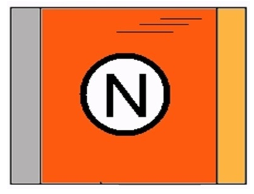 NANORTECH. JET Energy E-Cat World New Energy&Fuel LENR-Forum Blog Dr.Biberian Cold Fusion News NANORTECH. JET Energy E-Cat World New Energy&Fuel LENR-Forum Blog Dr.Biberian Cold Fusion News
 INFINITE ENERGY LENR Laboratory Oil Price Atom Ecology Exposing Truth Al Fin Energy LENR rev INFINITE ENERGY LENR Laboratory Oil Price Atom Ecology Exposing Truth Al Fin Energy LENR rev
 COLD FUSION NOW Anthropocene Inst Dr. Bob CF Rev ECAT-HOME CF Power Int COLD FUSION NOW Anthropocene Inst Dr. Bob CF Rev ECAT-HOME CF Power Int
Cryofusion.org CRFL Website Sifferkoll
ISCMNS LIBRARY Changing Power Clean Planet LENR News LENR-CF Rev Green CF (Japan) Library
|
|
.jpg)

Solar System is Traveling through Cloud of Supernova Debris
Aug 25, 2020 - "Radioactive elements synthesized in massive stars are ejected into space via stellar winds and supernova explosions. Our Solar System moves through the interstellar medium and collects these extrasolar products. One such product is iron-60. Because it is not naturally produced on Earth, the presence of this radioactive isotope is a sensitive indicator of supernova explosions within the last few million years. Australian National University’s Dr. Anton Wallner and colleagues previously found traces of iron-60 at about 2.6 million years ago, and possibly another at around 6 million years ago, suggesting our planet had traveled through fallout clouds from nearby supernovae. They also found the rare isotope in samples of lunar soil returned to Earth by the Apollo 12, 15 and 16 missions, and in samples of snow from Antarctica."
|
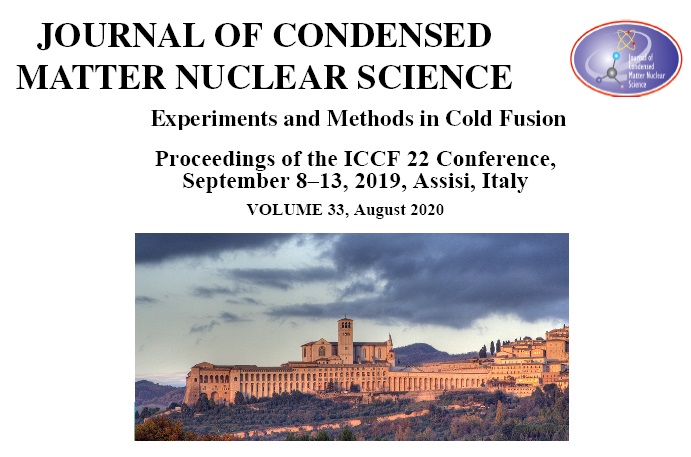
Corrected below (9/5/2020)
===> JCMNS Volume 33 (2020) pdf 82 megabytes
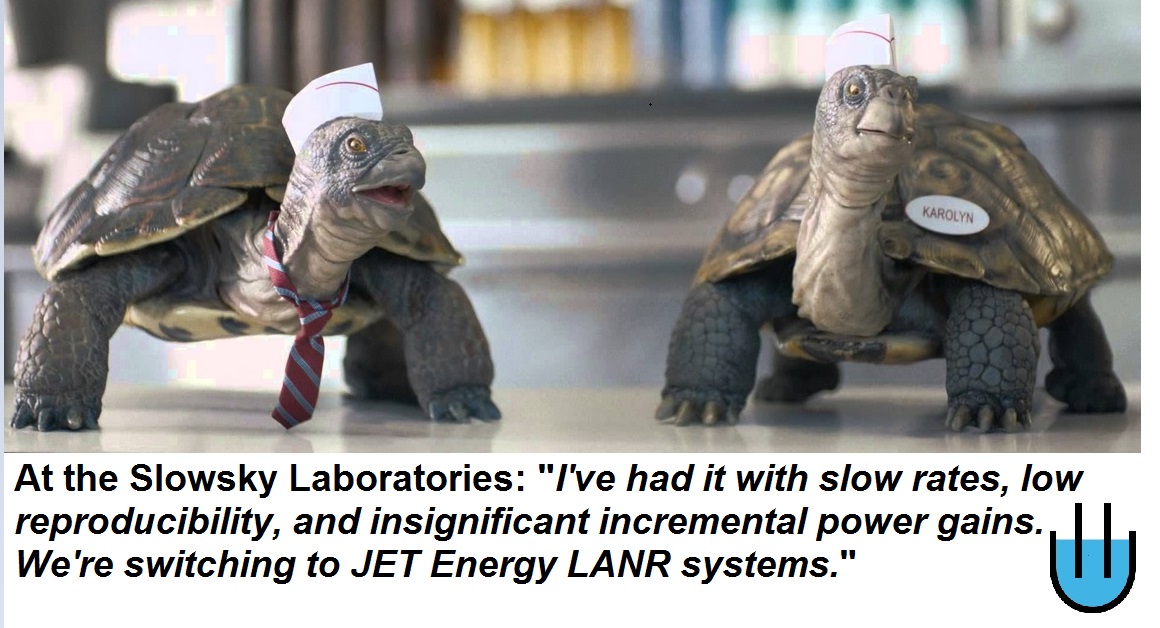
|
|
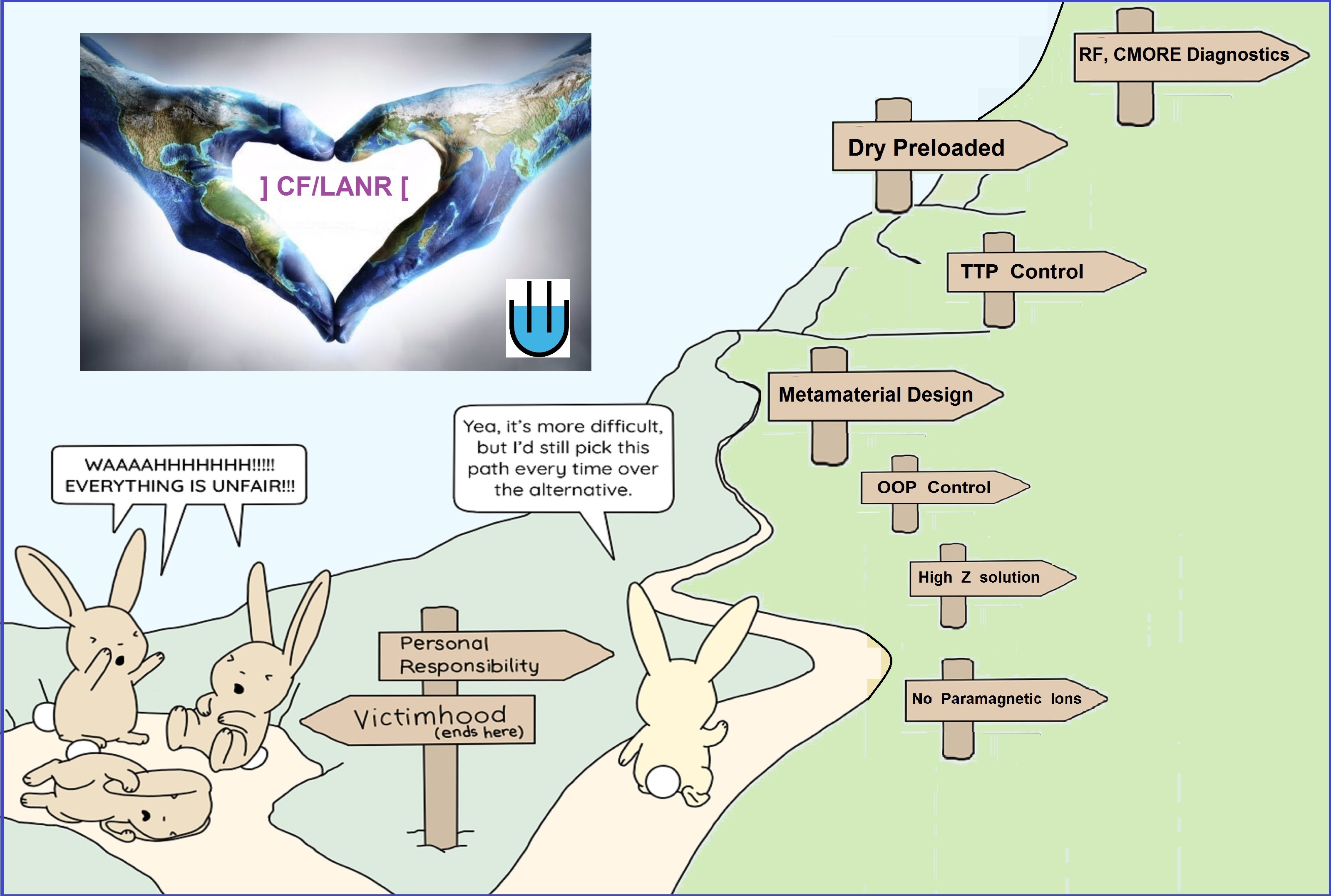
|
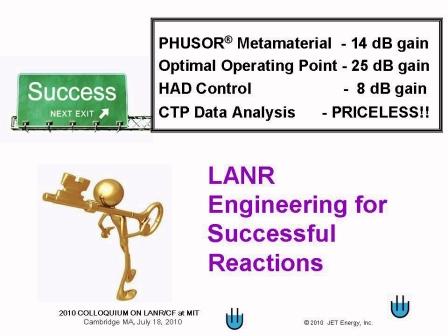 |
|
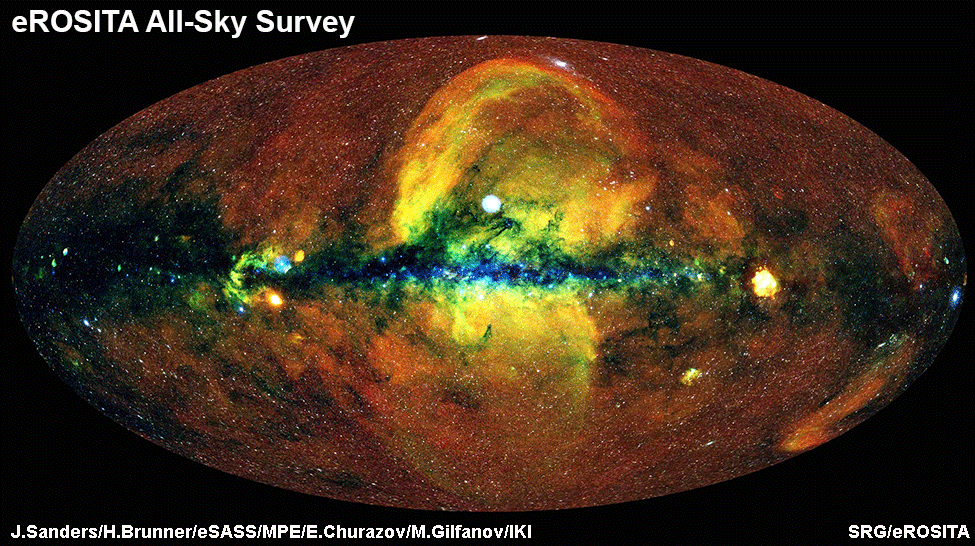
Aitoff projection of eRosita's all-sky data-set taken from 1.5 million klicks from Earth [blues = 1-2.3 keV, greens = 0.6-1 keV, reds = 0.3-0.6 keV]
Breathtaking new map of the X-ray Universe
June 19, 2020 - A German-Russian space telescope has just acquired a breakthrough map of the sky that traces the heavens in X-rays. The image records a lot of the violent action in the cosmos - instances where matter is being accelerated, heated and shredded. Feasting black holes, exploding stars, and searingly hot gas. The data comes from the eRosita instrument mounted on Spektr-RG.
 Physical Review C - Nuclear fusion reactions in deuterated metals Physical Review C - Nuclear fusion reactions in deuterated metals
Vladimir Pines, Marianna Pines, Arnon Chait, Bruce M. Steinetz, Lawrence P. Forsley, Robert C. Hendricks, Gustave C. Fralick, Theresa L. Benyo, Bayarbadrakh Baramsai, Philip B. Ugorowski, Michael D. Becks, Richard E. Martin, Nicholas Penney, and Carl E. Sandifer, II
Phys. Rev. C 101, 044609 – Nuclear fusion reactions of D-D are examined in an environment comprised of high density cold fuel embedded in metal lattices in which a small fuel portion is activated by hot neutrons. Such an environment provides for enhanced screening of the Coulomb barrier due to conduction and shell electrons of the metal lattice, or by plasma induced by ionizing radiation (? quanta). We show that neutrons are far more efficient than energetic charged particles, such as light particles (e-,e+) or heavy particles (p,d,a) in transferring kinetic energy to fuel nuclei (D) to initiate fusion processes. It is well known that screening increases the probability of tunneling through the Coulomb barrier. Electron screening also significantly increases the probability of large vs small angle Coulomb scattering of the reacting nuclei to enable subsequent nuclear reactions via tunneling.
Physical Review C - Novel nuclear reactions observed in bremsstrahlung-irradiated deuterated metals
Bruce M. Steinetz, Theresa L. Benyo, Arnon Chait, Robert C. Hendricks, Lawrence P. Forsley, Bayarbadrakh Baramsai, Philip B. Ugorowski, Michael D. Becks, Vladimir Pines, Marianna Pines, Richard E. Martin, Nicholas Penney, Gustave C. Fralick, and Carl E. Sandifer, II
Phys. Rev. C 101, 044610 – d-D nuclear fusion events were observed in an electron-screened, deuterated metal lattice by reacting cold deuterons with hot deuterons (d*) produced by elastically scattered neutrons originating from bremsstrahlung photodissociation (where “d” and “D” denote 2H). Exposure of deuterated materials (ErD3 and TiD2) to photon energies in the range of 2.5–2.9 MeV resulted in photodissociation neutrons that were below 400 keV and also the 2.45-MeV neutrons consistent with 2H(d,n)3He fusion. Additionally, neutron energies of approximately 4 and 5 MeV for TiD2 and ErD3 were measured, consistent with either boosted neutrons from kinetically heated deuterons or Oppenheimer-Phillips stripping reactions in the highly screened environment.
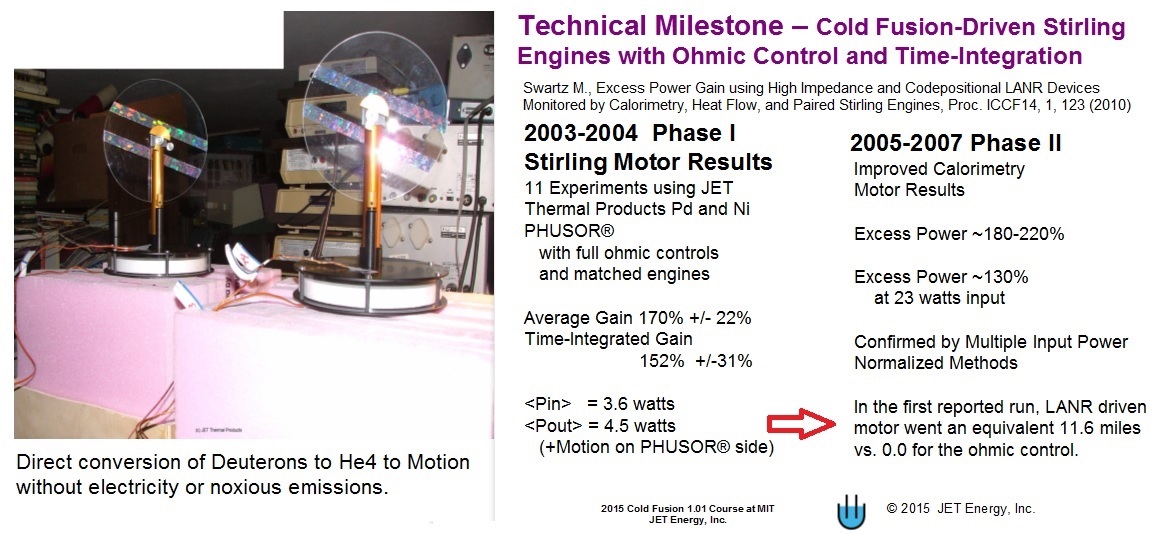

|
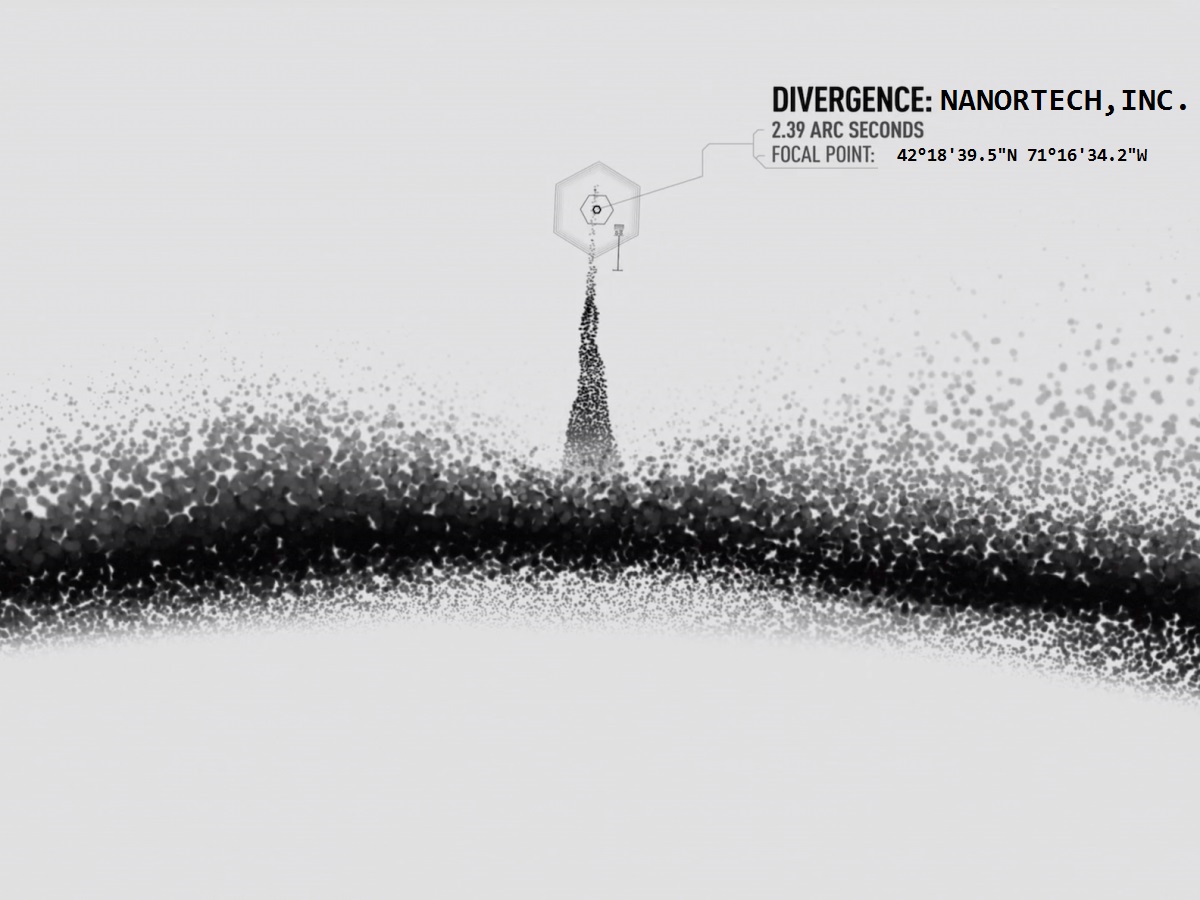
.jpg)
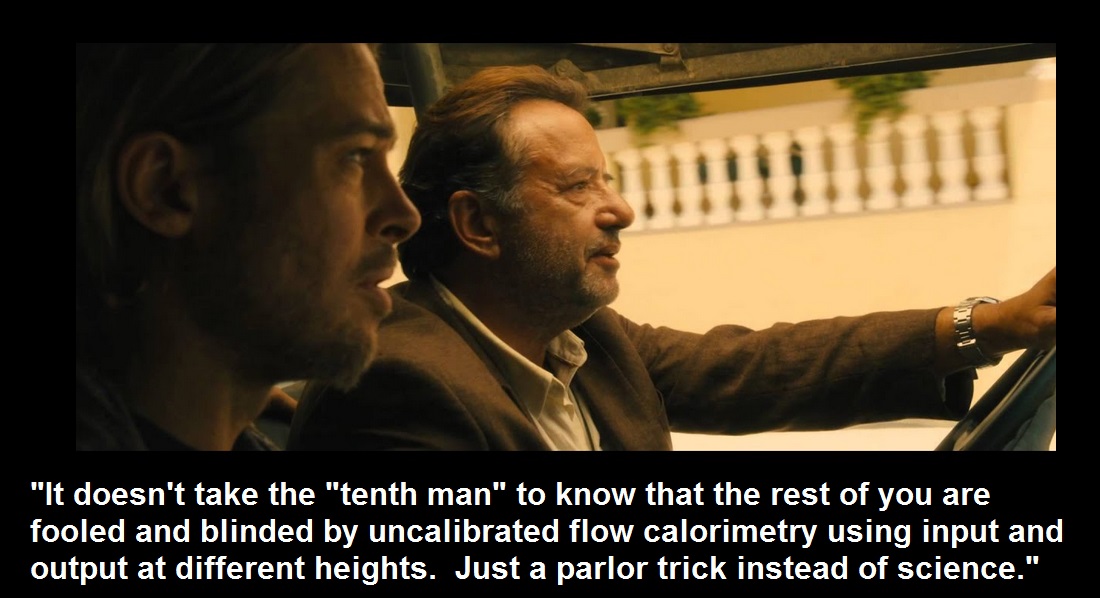
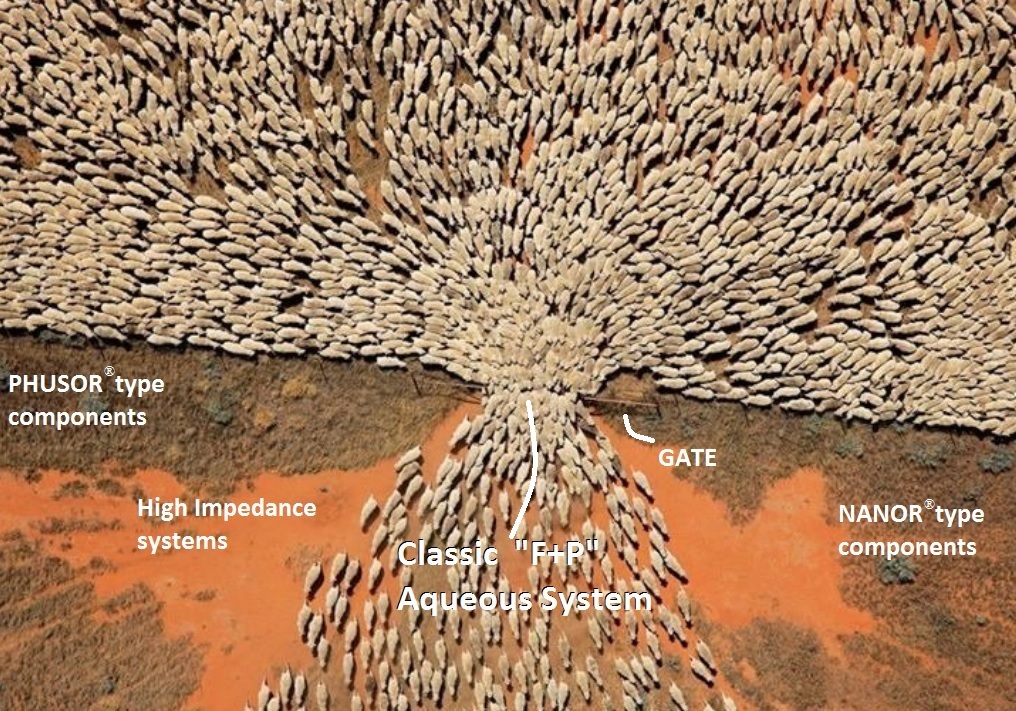
|
.jpg) |
Never mistake silence for inaction. |
|
|
 |
|
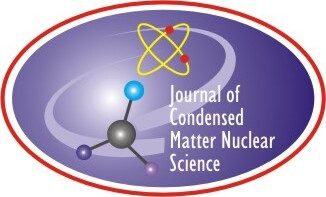
JOURNAL OF CONDENSED MATTER NUCLEAR SCIENCE Volume 31
RESEARCH ARTICLES
Plasmonic Field Enhancement at Oxide Metal Interfaces for Condensed Matter Nuclear Fusion - Katsuaki Tanabe
Investigations of "Heat after Death" - An Analysis of the Factors which Determine the Tardive Thermal Power and HAD Enthalpy - Mitchell R. Swartz
A Tale of Two Journals - Pamela A. Mosier-Boss and Lawrence P. Forsley
The Eyring Rate Theory Applied to Cold Fusion - Melvin H. Miles and Iraj Parchamazed
Alternatives to Calorimetry - Fabrice David and John Giles
Heavy Electron Catalysis of Nuclear Reactions - Anthony C. Zuppero and Thomas J Dolan
Remark on Lehnert's Revised Quantum Electrodynamics (RQED) - Victor Christianto, Florentin Smarandache and Yunita Umniyati
On Enhancement of Transmission Probability through a High Potential Barrier Due to an Anti-Zeno Effect - VA. Namiot and L.Yu. Shchurova
Atomic Nuclei Binding Energy: Case of 26Fe Isotopes - Philippe Hatt

Quantum Radio
March 18, 2019 - "Researchers at Delft University of Technology have created a detector that enables the detection of a single photon’s worth of radio frequency energy. The chip is only 10 mm square and ... has immediate applications in MRI and radio astronomy. Traditionally, detecting a single photon at radio frequencies is difficult due to the significance of thermal fluctuations. At lower frequencies, cryogenic cooling can reduce the issue, but ... frequency increases the fluctuations .... The trick requires a qubit that samples the radio frequency energy. While the radio source is at 173 MHz, the qubit is at 1 GHz, allowing a fine time resolution. Coupling of the two is via an LC circuit that uses a Josephson junction which, of course, requires very cold temperatures.
Army scientists create innovative quantum sensor
March 19, 2020 - quantum sensor could give Soldiers a way to detect communication signals over the entire radio frequency spectrum, from 0 (sic) to 100 GHz, said researchers from the Army. Such wide spectral coverage by a single antenna is impossible with a traditional receiver system, and would require multiple systems of individual antennas, amplifiers and other components. In 2018, Army scientists were the first in the world to create a quantum receiver that uses highly excited, super-sensitive atoms--known as Rydberg atoms--to detect communications signals"
Quantum Sensor Receives From 0 Hz To 1000 GHz
March 24, 2020 - "Although it isn’t that uncommon to have broadband radio coverage in a single device, going from 0 Hz (sic) to 1000 GHz with one antenna and receiver is a bit much. But not for the US Army it seems, because they’ve developed a quantum sensor that can cover that range. The technology uses Rydberg atoms, which are atoms with a highly excited valence electron. ... The basic idea is that one laser beam excites an atom to the Rydberg state and another laser probes the state of the atom. ... the Army used a single split beam for both jobs with an arrangement of modulators. The size of the Rydberg sensor was about a centimeter and the experiments compared the sensitivity to other sensors of similar size."
Assessment of Rydberg Atoms for Wideband Electric Field Sensing
"Rydberg atoms have attracted significant interest recently as electric field sensors. In order to assess potential applications, detailed understanding of relevant figures of merit is necessary, particularly in relation to other, more mature, sensor technologies. Here we present a quantitative analysis of the Rydberg sensor's sensitivity to oscillating electric fields with frequencies between 1 kHz and 1 THz. Sensitivity is calculated using a combination of analytical and semi-classical Floquet models. "

Research team discovers path to razor-sharp black hole images
March 18, 2020 - Lee Sandberg, Institute for Advanced Study
"The image of a black hole actually contains a nested series of rings," explains Michael Johnson of the Center for Astrophysics, .... "Each successive ring has about the same diameter but becomes increasingly sharper because its light orbited the black hole more times before reaching the observer. Because black holes trap any photons that cross their event horizon, they cast a shadow on their bright surrounding emission from hot infalling gas. A "photon ring" encircles this shadow, produced from light that is concentrated by the strong gravity near the black hole. This photon ring carries the fingerprint of the black hole—its size and shape encode the mass and rotation or "spin" of the black hole. With the EHT images, black hole researchers have a new tool to study these extraordinary objects."
|
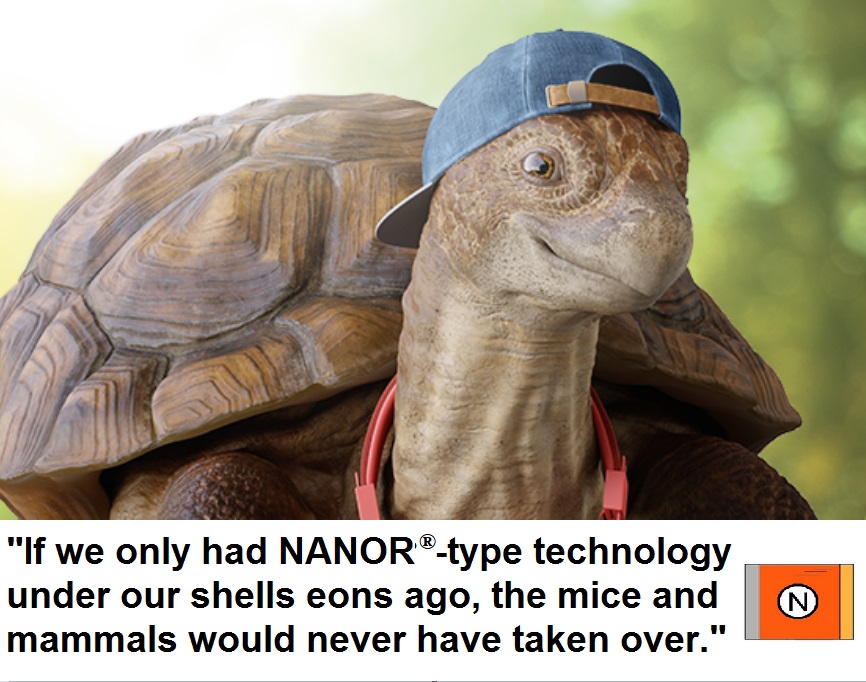

 click for: LATEST SOLAR, AURORAL, GEOMAGNETIC, click for: LATEST SOLAR, AURORAL, GEOMAGNETIC,
and HF/VHF/UHF PROPAGATION CONDITIONS
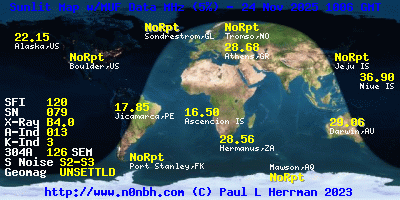
|
|
 Samarium nickel oxide can hide objects from infrared cameras Samarium nickel oxide can hide objects from infrared cameras

normal material (top) vs. Samarium nickel oxide coating (bottom)
January 8, 2020 - “Hotter objects typically glow brighter than cooler ones, making them stand out in infrared images. But a newly designed coating bucks the rule that hotter equals brighter….A basic rule of physics known as the Stefan-Boltzmann law states that the brightness of the thermal radiation emitted by an object grows rapidly with increasing temperature. …. Samarium nickel oxide doesn’t flout the Stefan-Boltzmann law. Instead, the material’s increasing brightness at higher temperatures is counteracted by a decrease in its emissivity. …. Earlier research has pinpointed substances that could confuse infrared cameras by appearing cooler as their temperatures rise.… Detectors that look at other wavelengths could still spot an object’s change in temperature."
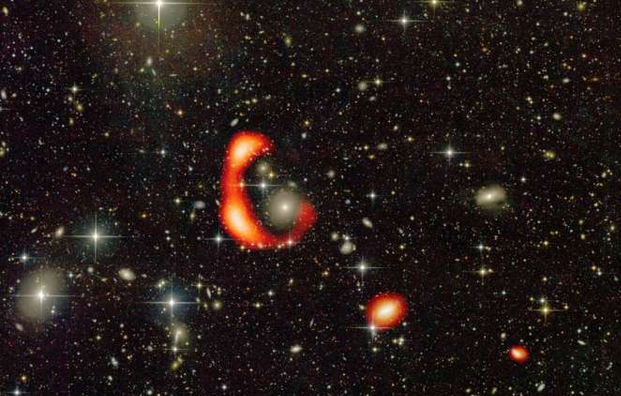
The Giant Meterwave Radio Telescope (GMRT) is in India. Thirty parabolic radio telescopes make up an interferometric array with a 25 klick (16 mile) baseline. They have found dark matter using received UHF emissions, such as we (JET Energy, Inc) presented at Assisi at ICCF-22. Optical image from CFHT telescope showing galaxy-wide masses of neutral hydrogen as a large red rings.
 GMRT discovers a gigantic ring of hydrogen gas around a distant galaxy GMRT discovers a gigantic ring of hydrogen gas around a distant galaxy
Phys.Org - January 2, 2020 - "Giant Metrewave Radio Telescope (GMRT) (has found a hydrogen) ring ... bigger than the galaxy it surrounds (with) a diameter of about 380,000 light-years. The galaxy (named AGC 203001), is located about 260 million light-years away from us. ... Neutral hydrogen emits radio waves at a wavelength of about 21cm. ... these images do not show any sign of starlight associated with the hydrogen ring."
Mark your Calendars: The Day Cold Fusion (LANR) Became Mainstream
 Final FY20 Appropriations: National Science Foundation Final FY20 Appropriations: National Science Foundation
Jan. 10, 2020 - "In the appropriations legislation it passed last month for fiscal year 2020, Congress increased the National Science Foundation budget by 2.5% to $8.3 billion, just under the amount the Senate had proposed and well short of the 7% increase sought by the House. .... Low-energy nuclear reactions. The House report encourages NSF to “evaluate the various theories, experiments, and scientific literature surrounding the field of LENR,” which is most associated with the pursuit of cold fusion. It also directs NSF to “provide a set of recommendations as to whether future federal investment into LENR research would be prudent, and if so, a plan for how that investment would be best utilized.”

'Cotton candy' planet mysteries unravel in new Hubble observations
December 19, 2019 – “Kepler 51 and three giant planets that NASA's Kepler space telescope discovered in 2012–2014 … are all roughly the size of Jupiter but a tiny fraction of its mass. This means the planets have an extraordinarily low density, more like that of Styrofoam rather than rock or water. Now their puffed-up hydrogen/helium atmospheres are bleeding off into space. … "Super-Puffs" may sound like a new breakfast cereal. But it's actually the nickname for a unique and rare class of young exoplanets that have the density of cotton candy. Nothing like them exists in our solar system.”
|

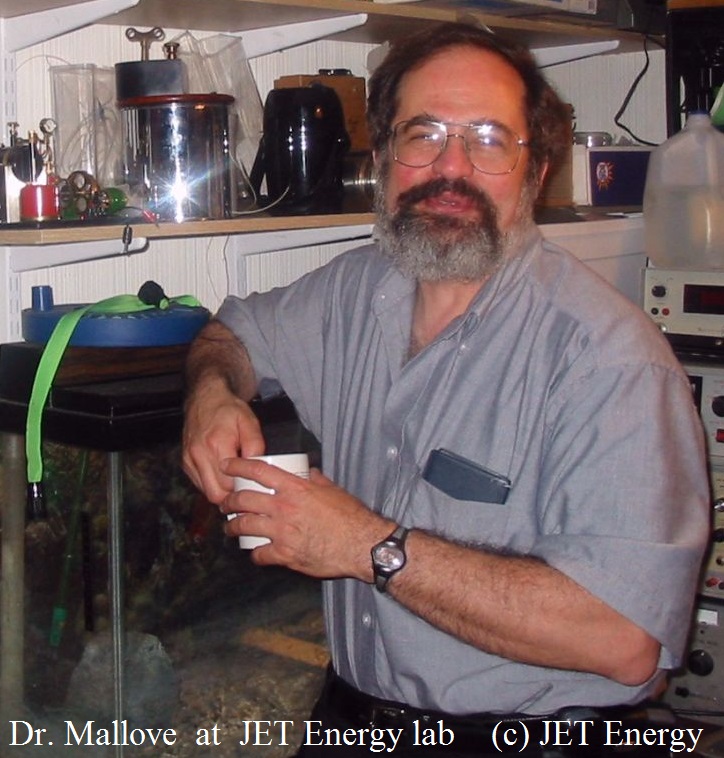
1st Time Dr. Eugene Mallove saw excess heat, himself. Verification of PHUSOR®type system
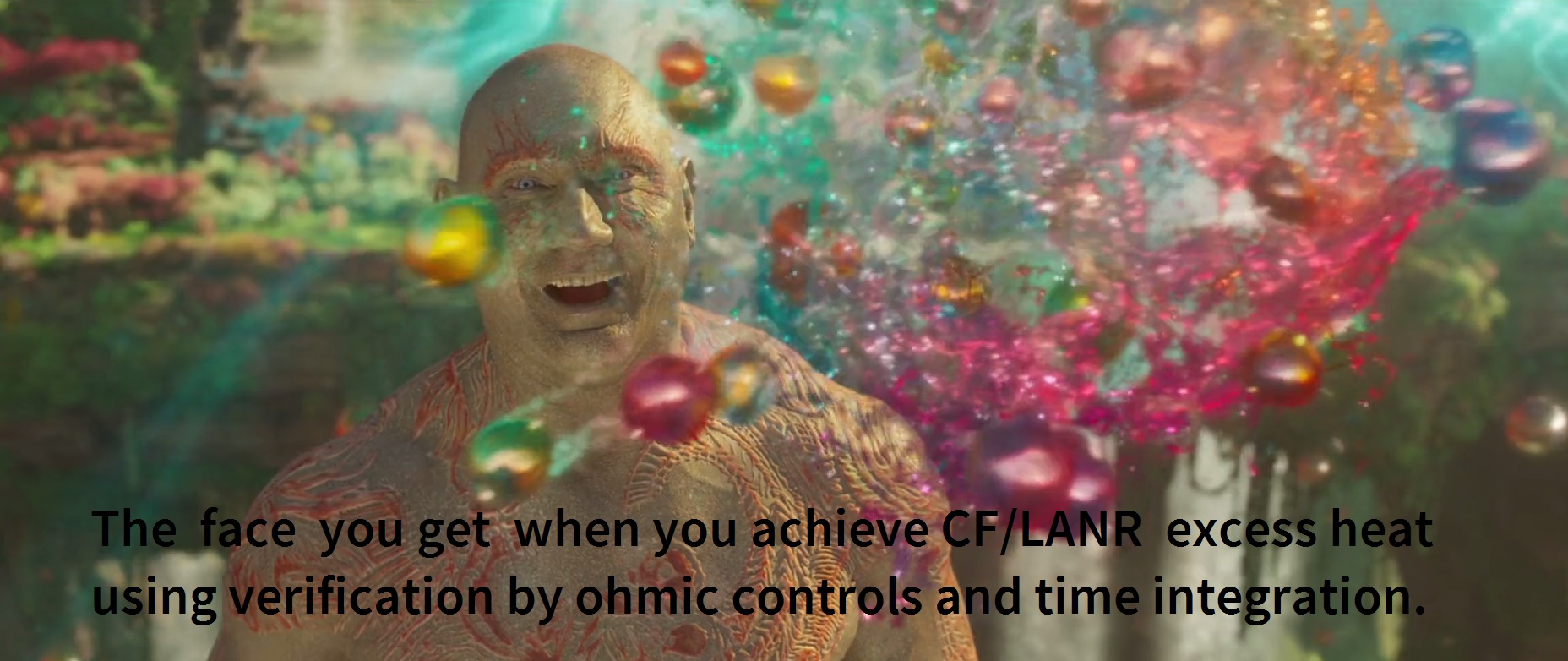
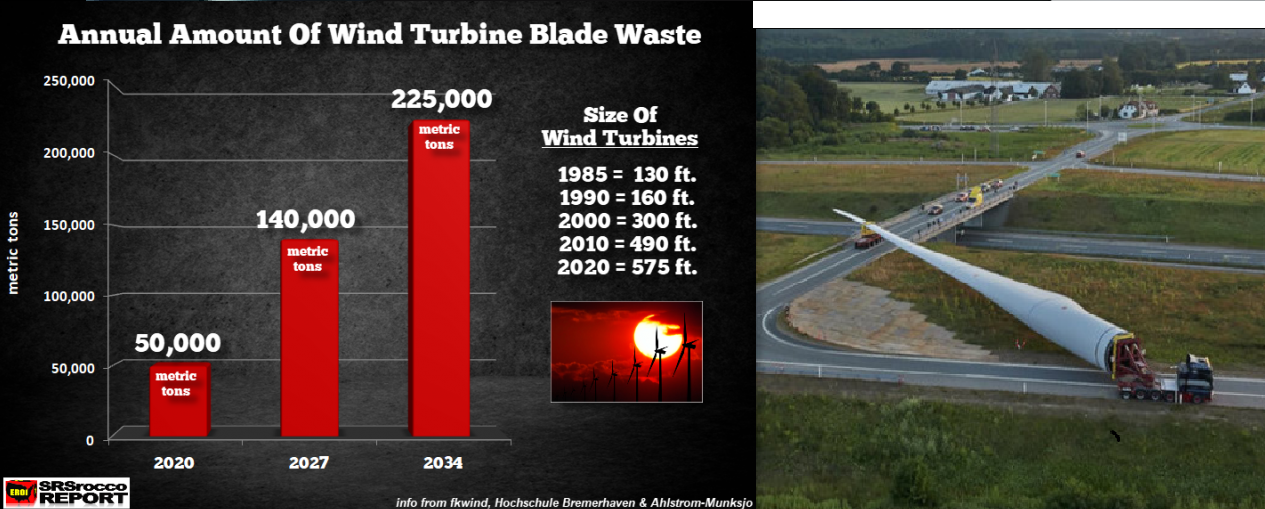
THE RENEWABLE GREEN ENERGY MYTH: 50,000 Tons Of Non-Recyclable Wind Turbine Blades Dumped
Jan. 9, 2020 — "Funny, no one seemed to consider what to do with the massive amount of wind turbine blades once they reached the end of their lifespan. Thus, the irony of the present-day Green Energy Movement is the dumping of thousands of tons of “non-recyclable” supposedly renewable wind turbine blades in the country’s landfills. ... “Our crushing equipment is not big enough to crush them,” a landfill representative told NPR.
Now, why is the Wind Power Industry discarding its blades in landfills? Unfortunately, due to the way the blades are manufactured, it isn’t economical or practical to recycle them even though some small-scale recycling has been done. ... the wind industry will generate 50,000 tons of blade waste in 2020, but that will quadruple to 225,000 tons by 2034."
|
|
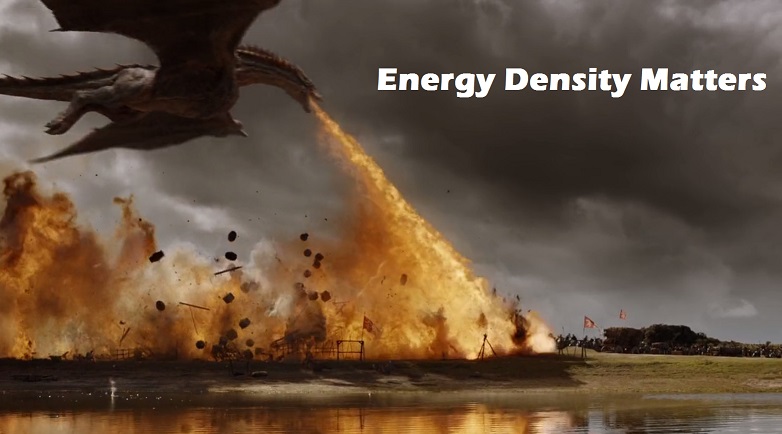

Bezos-Backed Fusion Startup Raises $100 Million for Demo System
Dec. 16, 2019 - "A nucear fusion start-up backed by billionaire Jeff Bezos raised more than $100 million to help design and build a demonstration power plant. The company lined up $65 million in Series E financing led by Singapore’s Temasek Holdings Pte, and is getting another $38 million from Canada’s Strategic Innovation Fund, General Fusion Inc. said in a statement Monday. It’s now attracted more than $200 million in financing....Firms pursuing such designs are hoping they can start generating power sooner than the 35-nation, $25 billion Tokamak fusion reactor known as ITER. Collaborators on that facility -- the largest research project in history -- have been laboring on a gigantic demonstration reactor in France since 2010. ... The financing round was led by Temasek, and joined by existing investors including Bezos Expeditions and Chrysalix Venture Capital."

 Astronomers race to learn from first interstellar asteroid ever seen Astronomers race to learn from first interstellar asteroid ever seen
"The asteroid skirted the Sun on 9 September, when it was inside Mercury’s orbit, and then passed by Earth at a distance of 24 million kilometres on 14 October."
 Second-ever interstellar comet contains alien water Second-ever interstellar comet contains alien water
"Astronomers have for the first time spotted signs of water in our Solar System that originated somewhere else. The alien water seems to be spraying off comet 2I/Borisov, which is flying towards the Sun on a journey from interstellar space."
 How two intruders from interstellar space are upending astronomy How two intruders from interstellar space are upending astronomy
Nov. 20, 2019 - "1I/‘Oumuamua and 2I/Borisov have provided the first direct glimpse of the physics and chemistry of the squashed debris clouds that surround young stars and serve as the birthing grounds for planets. ... These samples from other planetary systems are allowing scientists to explore whether the Solar System is unique or whether it shares building blocks with other planetary systems in the Milky Way.
 Cold fusion 3: commercial future and Asia Cold fusion 3: commercial future and Asia
"It is safe to say that cold fusion, if followed through in all its implications, has the potential to unleash revolutionary developments in many fields of science and technology. Moreover, it is likely that cold fusion is only one of a much broader family of nuclear reactions – Low Energy Nuclear Reactions (LENR) – occurring in dense materials, which can generate energy without dangerous release of radiation and might be realized by relatively simple, compact devices. Judging from the ICCF-22 conference and relevant research literature – and disregarding various sensational, but dubious claims that continue to muddy the waters – it is reasonable to expect that the first commercial applications will emerge over the next five to 10 years in the domain of heat generation in the temperature range up to 200° C."
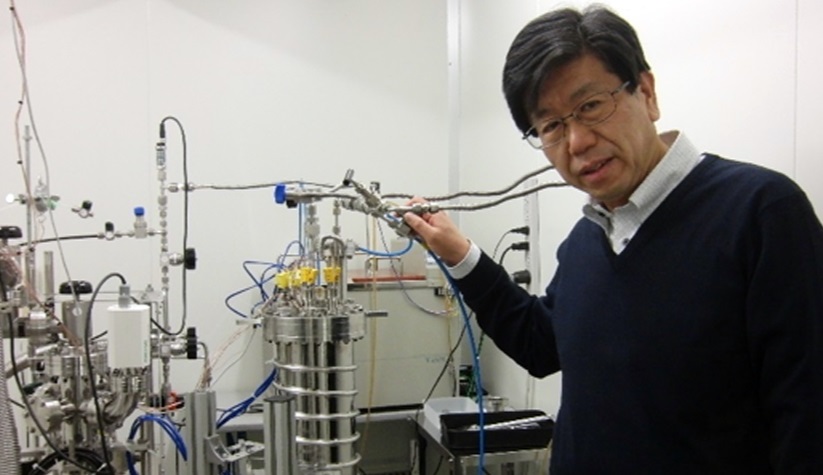
 Cold fusion 2: Japan wins Jonathan Tennenbaum Cold fusion 2: Japan wins Jonathan Tennenbaum
"In my view Japan – without question the world leader today when it comes to experimental research in this field – has produced the most compelling demonstrations of the existence and reproducibility of cold fusion. Japan owes its leading position in large measure to consistent institutional and industrial support and a systematic, step-by-step approach emphasizing the development of advanced materials for cold fusion devices.... A watershed was reached two years ago with the completion of a multi-institutional project sponsored by the New Energy and Industrial Technology Development Organization (NEDO), one of the largest public funding agencies in Japan, working under the Ministry of Economy, Trade and Industry. The project involved a collaboration among Kyushu University, Tohoku University, Nagoya University, Nissan Motor Co and Technova (a technology firm in which Toyota Motor Corp is a principal shareholder)."
 
 Cold fusion - A potential energy gamechanger Jonathan Tennenbaum Cold fusion - A potential energy gamechanger Jonathan Tennenbaum
Think it’s a failure, a joke? Think again. Big investors are positioning themselves, Japan & US in the lead
A desktop-sized nuclear reactor that generates energy without radioactivity – it sounds too good to be true. ... Now a combination of three factors – accumulation of credible experimental results over the ensuing 30-odd years, resolution of some major issues regarding reproducibility and a developing technology base – has brought cold fusion to the threshold of a breakout. Big players are quietly investing substantial sums into cold fusion research, positioning themselves for what could turn out to be a major game-changer on the global energy scene. Japan and the United States are way ahead. In Japan, presently the leading nation in this field, the sponsors include Mitsubishi Heavy Industries, Mitsubishi Estate Company, Toyota, Nissan, Tanaka Precious Metals and the Miura Corporation, a major producer of heating equipment. ... The wave of interest in cold fusion was evident behind the scenes at the 22nd International Conference on Condensed Matter Nuclear Science (abbreviated ICCF-22) in Assisi, Italy, earlier this year.
 22nd International Conference on Condensed Matter Nuclear Science ICCF-22 22nd International Conference on Condensed Matter Nuclear Science ICCF-22 

|

 Defense Threat Reduction Agency (DTRA) report on High Energy Science & Technology Assessment workshop Defense Threat Reduction Agency (DTRA) report on High Energy Science & Technology Assessment workshop
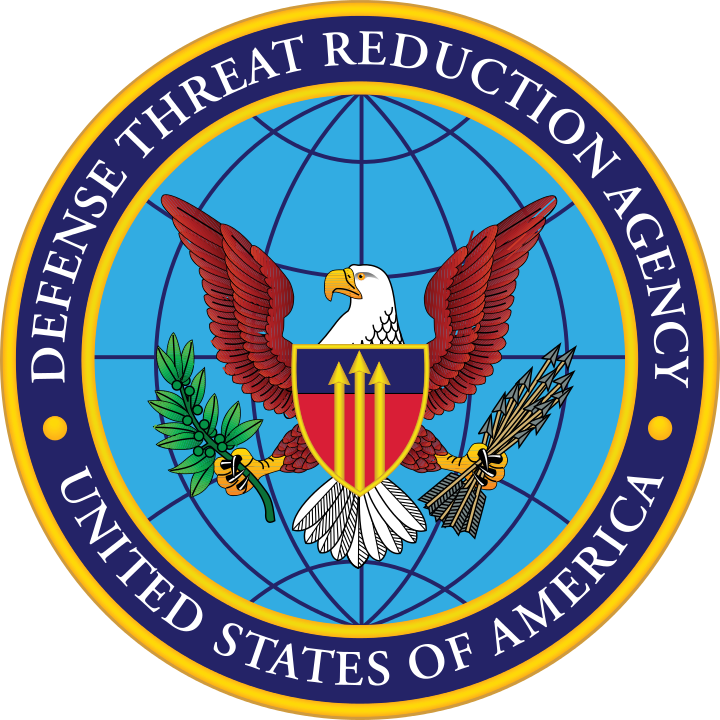
March 18, 2015 - "Today I present a report in 2007, originally "for official use only", distributed only between US government agencies and their contractors, then declassified in 2011, finally put online yesterday on http://www.governmentattic.org . It provides a comprehensive account of a workshop on science valutatativo high energy held December 12 to 13, 2006 in Fort Belvoir, Virginia.
.... "Dr. Mitchell Swartz, JET Energy, Inc. presented a brief summary of the results of excess heat experiments in electric-field loaded deuterated metals: Excess Heat in Electric-Field Loaded Deuterated Metals. .... "Professor Michael Melich, WE Meyer Institute for Systems Engineering, Naval Postgraduate School, talked about transmutation as the signal for detecting LENR experiments using Deuterium Conducted in a cell with an electrolytic Pd diffusion barrier. ..... Low Energy Nuclear Reactions are showing some remarkable progress with respect to energy (excess heat) production and transmuted element detection, .... "LENR Still Suffers from negative publicity associated with Cold Fusion and is viewed as being Conducted outside the domain of legitimate, mainstream science. Nonetheless, the persistent and increasingly repeatable Demonstrations of excess heat and transmutation suggest That there is something here worth Pursuing. You can download the entire document here:
DTRA 2006 on LANR/LENR
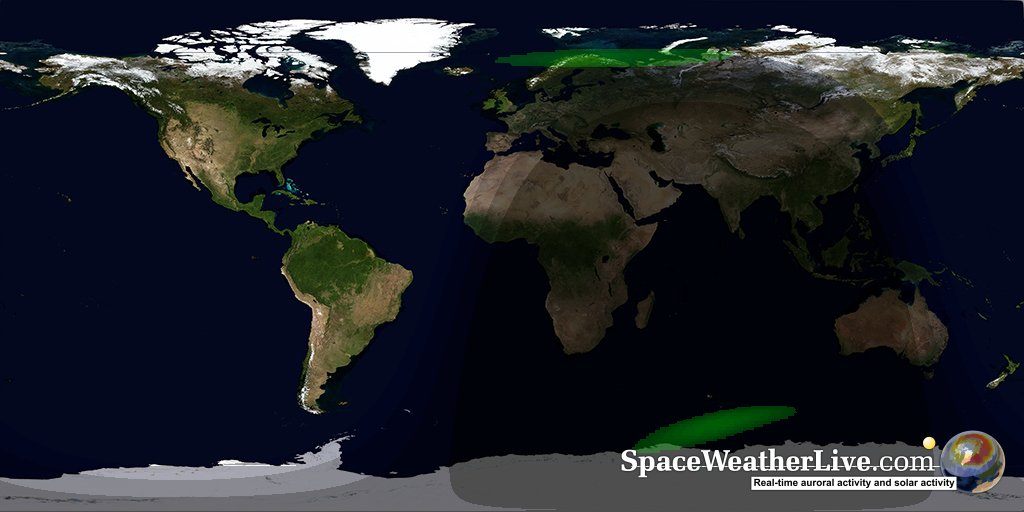
 FARRAGO FUSION FARRAGO FUSION 
 Investors Still Stuck in Woodford’s Imploded Mutual Fund Tally Their Losses Investors Still Stuck in Woodford’s Imploded Mutual Fund Tally Their Losses
Nov. 14, 2019 - "Hundreds of thousands of investors trapped .... could lose a third or more of their remaining investment ... holdings of cold fusion developer Industrial Heat to its shares in litigation funding specialist Burford Capital, had plunged by between 30% and 70% YTD."
 Woodford analysis suggests investors may lose a third of their money Woodford analysis suggests investors may lose a third of their money
Nov. 13, 2019 - "Investors in British money manager Neil Woodford's flagship fund could lose more than 1 billion pounds, four times more than had it reopened in December ... Two other scenarios, based on selling stakes in Industrial Heat and Mafic -- among the fund's biggest unlisted holdings --at 50% and 75% discounts, resulted in total estimated losses of 7.2% and 7.9% respectively, the document showed.
 Nov. 13, 2019 - Woodford Analysis Suggests Investors May Lose a Third of Their Money Nov. 13, 2019 - Woodford Analysis Suggests Investors May Lose a Third of Their Money

Nov. 10 2019 - The Scottish Mail
 1,000 reasons Woodford may be heading day for ... COURT 1,000 reasons Woodford may be heading day for ... COURT
|
|
 E- Cat astrophe!!!!! E- Cat astrophe!!!!!
The Rossi distraction and diversion of the past several years has significantly impaired LENR progress. In the end, that may become the consumate definition of "The Rossi Effect.
- Dewey Weaver
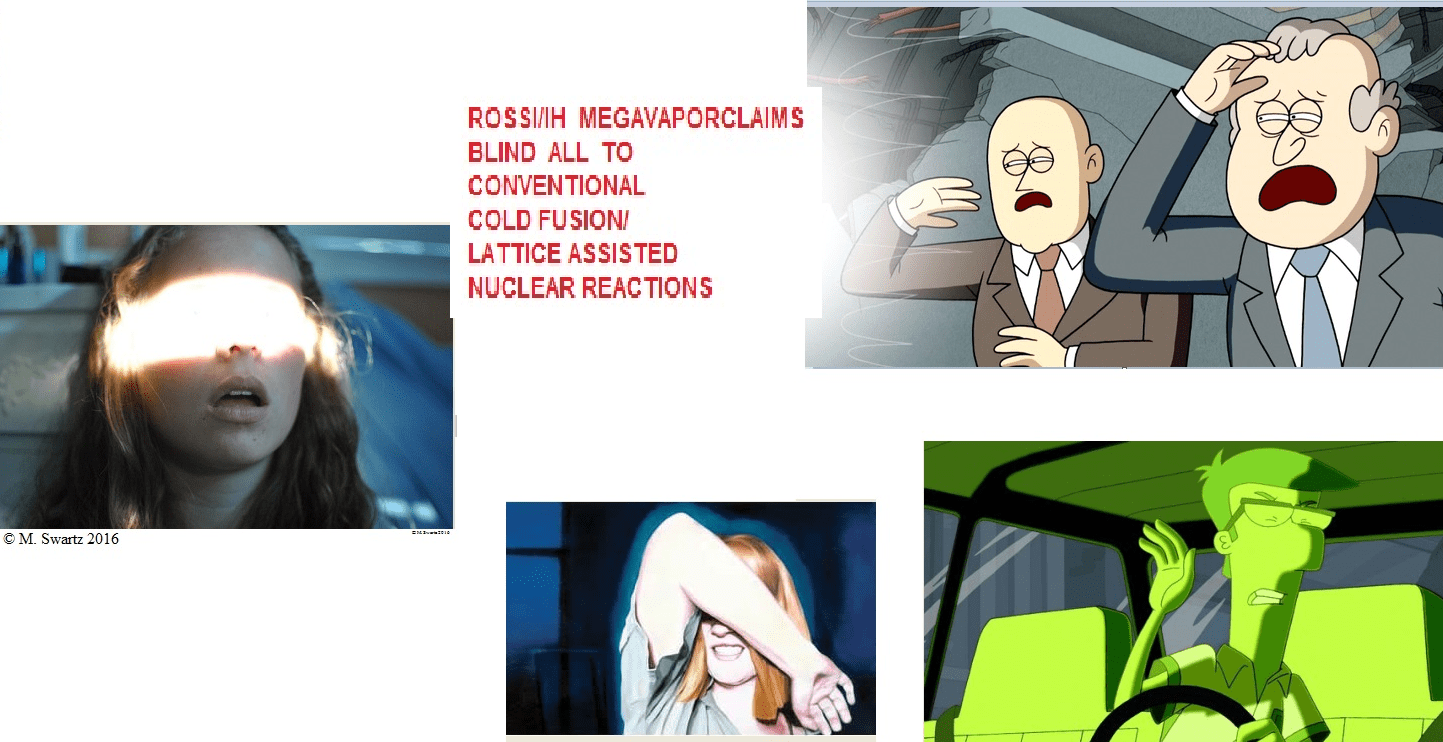
Jury Trial in Sep 2017 Response 2 Mot to Dismss Rossi_et_al_v_Darden_et_al.pdf M2Dismiss Discussion
Facts do not Support IH M2Dismiss Industrial Heat Files Motion to Dismiss Rossi Lawsuit Sifferkoll® LENR-Forum
Rossi: 1 Week E-Cat QuarkX Test to Start at End of May with Potential Cutomer/Partner
Leonardo Corporation Issues Press Release Announcing Termination of Industrial Heat License Industrial Heat Don’t Believe ERV Report
Leonardo Corp. Press Release: “Inventor Sues Industrial Heat, LLC” (ERV is Fabio Penon) Opposite hypothesis on the Rossi-IH affair
Andrea Rossi Responds to IH Statement (Updated) New Q&A on ERV, IH and E-Cat Test Statement From Andrea Rossi
Andrea Rossi Goes to Court: What Happens to the E-Cat Now? New Energy World Symposium cancelled
|
 The NANOR technology: an alternative LENR reactor Technology The NANOR technology: an alternative LENR reactor Technology
Vessela Nikolova

Energy (is a) a clean promising energy multiplier very different from Andrea Rossi’s E-Cat. ... So, it could be used, in the future, as an effective, clean, highly efficient, energy production system. he NANOR® components are smaller than 2 cm in length, and with 30–200 mg of active LANR material. Their ‘core’ contains active ZrO2–PdD nanostructured material [Zr (66%), Ni (0–30%), and Pd (5–25%) by weight], loaded with additional deuterium (D) to achieve loadings (ratio of D to Pd) of more than 130%. Indeed, nanostructured materials have incredibly large surface area to volume ratios. Second, many also have new unexpected quantum mechanical properties: they enable quantum confinements, surface plasmon resonances, and superparamagnetism. ... The fuel for the nanostructured material in the core is deuterium, and the product is believed to be de novo 4He produced by the deuterium fusion. The ‘excess heat’ observed is thought due to energy derived from coherent de-excitation of molecule D2 to ground state 4He. .... the excess energy gain of a NANOR compared to driving input energy is up to 20 times. The reactor openly demonstrated an energy gain (COP) which ranged generally from 5 to 16 ... It is interesting to compare this parameter with the E-Cat, a much larger device. You have to consider that the Andrea Rossi’s Hot-Cat illustrated in the TPR-1 had a reaction chamber of about 200 cubic centimeters, which may contain about 100 grams of active powder. So, a NANOR using 100 grams of active powder would produce a thermal power of (100000 / 200) x 2 = 1000 W, or, more simply, 1 kW. Thus the difference seems not so great. .... there is approximately a factor 2 between the performances of the two different reactors."
|
| |
|
|
 Proceedings of JCF15 Proceedings of JCF15
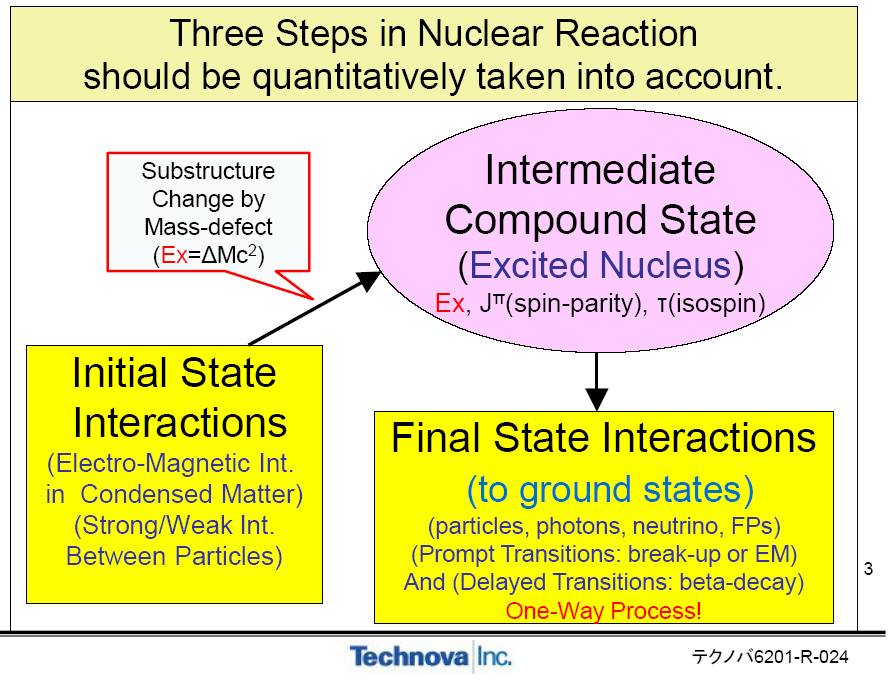
|
 LENR Patents Open Doors to New Investment and New Conflict LENR Patents Open Doors to New Investment and New Conflict
Nov. 20, 2015 – "...on Nov. 10, the USPTO issued patent US 9,182,365 B2 for a LENR method that produces excess heat to David Allan Kidwell, a chemist with the Naval Research Laboratory (NRL). Kidwell’s second LENR patent, US 9,192,918, will issue on Nov. 24. Although some patents for LENR excess-heat-related inventions were issued in the 26-year history of this field, they have been rare events. .... According to the patents, Kidwell has invented a method for producing excess heat by special preparation of palladium nanoparticles, two nanometers or less, placed on a metal-oxide support mechanism and subjected to pressurized deuterium gas. Kidwell works in NRL’s Surface Nanoscience and Sensor Technology Section (Code 6177). .... In the past, Kidwell has been critical of other researchers in this field. In his first public appearance in the field, during a 2008 presentation at the 14th International Conference on Cold Fusion (ICCF-14), in Washington, D.C., Kidwell spoke in a condescending tone about the expertise and claims of researchers in the field who had reported low-energy nuclear transmutations.....In his paper and in his patent application, Kidwell claimed that his experiments at NRL with hydrogen did not produce any excess heat. There are strong reasons not to trust this part of his claim and his data. Not only does a significant body of data in the field show that the presence of hydrogen, as a gas or in light water, produce excess heat and nuclear anomalies, but also Kidwell’s own slide presentation says that “hydrogen may not be the best control.” Another statement in Kidwell’s paper seems inaccurate. “No convincing evidence of radiation or transmutations has been reported, and the calorimetry results are sometimes called into question,” he wrote. This blanket statement is wrong. The field has abundant credible references for low levels of low-energy neutron emission, alpha emission, production of new elements and anomalous isotopic changes. [1-4] Kidwell’s assertion that the reported calorimetry results of the entire field are suspect is not credible. .... Kidwell threw another curveball while he was at the Rome conference. On Oct. 6, 2009, a week after he filed his provisional patent application #61/246,619 for excess heat, he gave a second presentation. In that, he suggested that, in a LENR transmutation experiment performed at Mitsubishi, the growth of praseodymium, a rare earth element reported by the Mitsubishi researchers, was the result of contamination. But Kidwell did not simply suggest that the Mitsubishi data was the result of sloppiness on the part of the Japanese researchers. He went further, suggesting that a former Mitsubishi employee had used “lucky tweezers” to intentionally spike the experiment with praseodymium. It was a shocking accusation, even more so because it came from a U.S. government scientist. In singling out the praseodymium result, Kidwell implied that the decade-long transmutation research effort led by Yasuhiro Iwamura, in a clean room at Mitsubishi, which demonstrated six pairs of element changes, not to mention anomalous isotopic shifts, was the result of contamination. This was not the case."
|
|
 Oct. 5, 2015 - Current Review of Low Energy Energy Reactions aka Oct. 5, 2015 - Current Review of Low Energy Energy Reactions aka
Cold Fusion by the US Naval Sea Systems Command
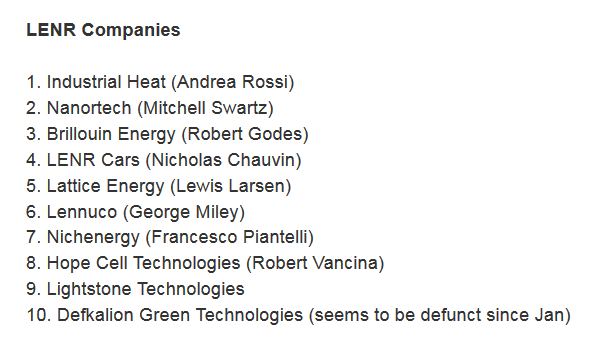
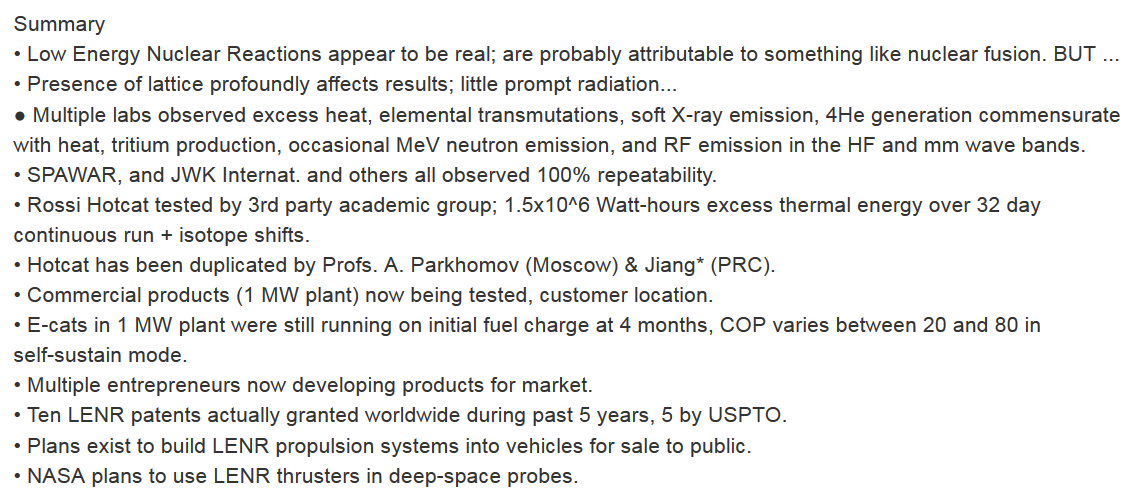
|
 Dr. Louis DeChiaro's Slides from Teledyne Presentation to IEEE (pdf) Dr. Louis DeChiaro's Slides from Teledyne Presentation to IEEE (pdf)
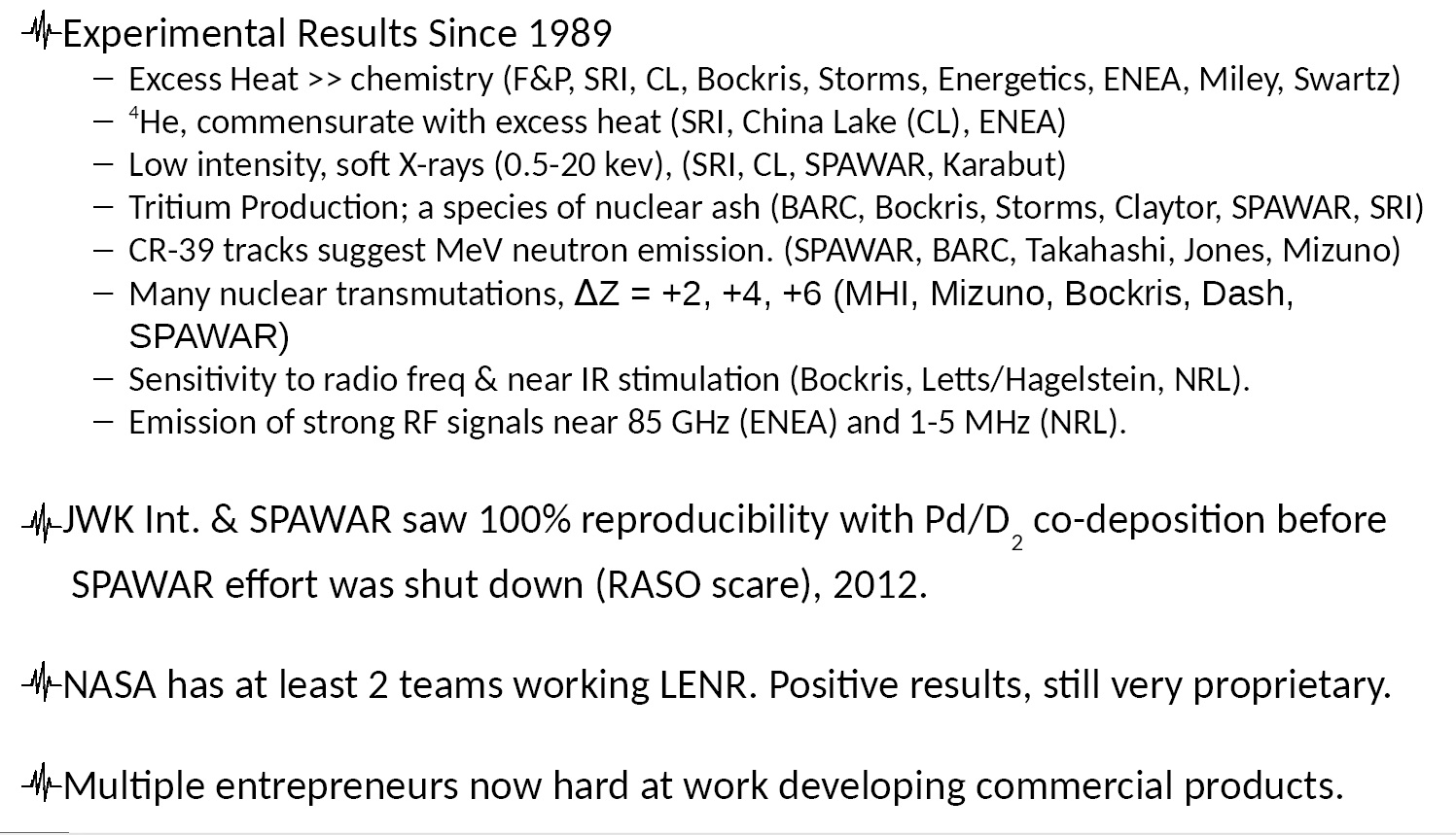
|
| |
|
|
|
|
 {Anons, Autists, Bakers, Colleagues, Students, DOJ, White Hats : 411 below}
{Anons, Autists, Bakers, Colleagues, Students, DOJ, White Hats : 411 below} ![]() Visitors
Visitors Updated Sept. 6, 2020 ISSN#1072-2874 Cold Fusion Times © 2020


 NANORTECH.
NANORTECH..jpg)










.jpg)


.jpg)






 click for: LATEST
click for: LATEST 






















